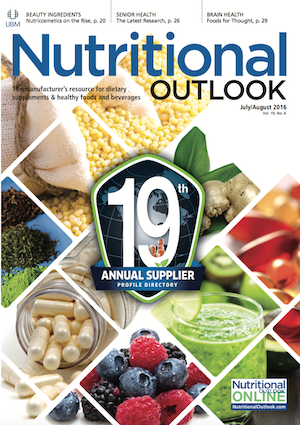Flavor Firms Explain How to Navigate Supply Shortages
Suppliers in just about every segment of the ingredients market face supply shortages from time to time. But flavor firms, in particular, have added challenges to deal with.
Photo © iStockphoto.com/henrick jonsson

Try as they might to prepare for it, suppliers in just about every segment of the ingredients market face supply shortages from time to time. Flavor firms, in particular, have added challenges to deal with. On top of potential price increases, the distinct taste profile of many flavor ingredients can make reformulating especially challenging during a shortage, explains Richard Brownell, vice president of vanilla products for Virginia Dare (Brooklyn, NY).
“Flavors are complex combinations of many individual components that provide a unique sensory profile in foods, beverages, and pharmaceuticals,” says Brownell. “The difficulty of making substitutions when ingredient shortages occur is especially true of natural ingredients, which often differ from one origin or supplier to the next.”
At the moment, vanilla may be the most famous flavor in limited supply. Bad harvests in Madagascar, the world’s top producer of vanilla beans, sent vanilla prices skyrocketing from $20/kg five years ago to more than $200/kg today. But it’s not the only case. Political turmoil in Syria has disrupted sourcing of Aleppo pepper, and unfavorable weather in Southeast Asia has led to failed coconut and pineapple crops.
The good news is flavor firms have developed a host of strategies to anticipate and address these kinds of shortages.
Always Be Prepared
As with any investment strategy, diversification is often the best defense. It’s important to avoid relying on a single source of an ingredient whenever possible, advises Synergy Flavors (Wauconda, IL).
“This puts us in a strong position to ensure we have varied sources of supply-even if there is a failed pineapple crop in Thailand-because we also maintain good relations for pineapple options in Costa Rica,” explains Tim Yoho, director of quality, regulatory, and procurement for Synergy. He adds that Synergy’s multi-source strategy has allowed it to keep both coconut and pineapple ingredients in sufficient stock to meet customer needs.
But even with a diverse geographic portfolio, dramatic ingredient shortages in one locale can have an outsized effect on the entire global market, as is the case with vanilla. That’s why it’s also crucial to keep an eye on conditions that could lead to a shortage and plan accordingly. Virginia Dare, for example, began stockpiling extra vanilla bean several years ago in anticipation of the coming vanilla shortage, says Brownell. But sometimes that proactive strategy can only last so long.
“This cycle is now five years old, and we have felt the impact of higher bean prices as we have replenished our bean inventories,” says Brownell. Unfortunately, it could be two or more years from now before the vanilla supply can fully recover.
Weathering the Storm
Once a shortage is here, there are still plenty of ways to mitigate its impact. As vanilla problems persist, Virginia Dare has helped its customers reformulate with lower-cost vanilla beans sourced from countries besides Madagascar, Brownell says.
Other firms, such as Sensient Flavors (Hoffman Estates, IL), stretch the limited vanilla supply further by focusing on optimal extraction techniques.
“We leverage our various extraction technologies to distill the maximum amount of flavor from our raw ingredients and drive down costs,” says Joe Gadomski, purchasing manager for Sensient’s flavor group division.
Sometimes, though, reformulation makes more financial sense if ingredient prices go too high. Since the vanilla shortage began, Gold Coast Ingredients (Commerce, CA) has increased inventory and sales of alternative vanilla flavors, which can be used as hybrid or full replacements for vanilla extract. While this may pose a problem for companies looking to claim vanilla extract on their labels, vanilla alternatives can offer more consistent taste and price, explains Megan Trent, marketing assistant for Gold Coast Ingredients.
“It really depends on what the customer is looking for, and we provide options for every customer’s needs,” Trent says.
Read more:
Enzyme Ingredient May Help Alleviate Vanilla Shortage
2016 Flavor Trends for Food and Beverage
Vanilla Alternatives Address Soaring-High Vanilla Prices
Michael Crane
Associate Editor
Nutritional Outlook Magazine
michael.crane@ubm.com

















Prinova acquires Aplinova to further increase its footprint in Latin America
April 7th 2025Prinova has recently announced the acquisition of Brazilian ingredients distributor Aplinova, which is a provider of specialty ingredients for a range of market segments that include food, beverage, supplements, and personal care.
Prinova acquires Aplinova to further increase its footprint in Latin America
April 7th 2025Prinova has recently announced the acquisition of Brazilian ingredients distributor Aplinova, which is a provider of specialty ingredients for a range of market segments that include food, beverage, supplements, and personal care.
2 Commerce Drive
Cranbury, NJ 08512
All rights reserved.

